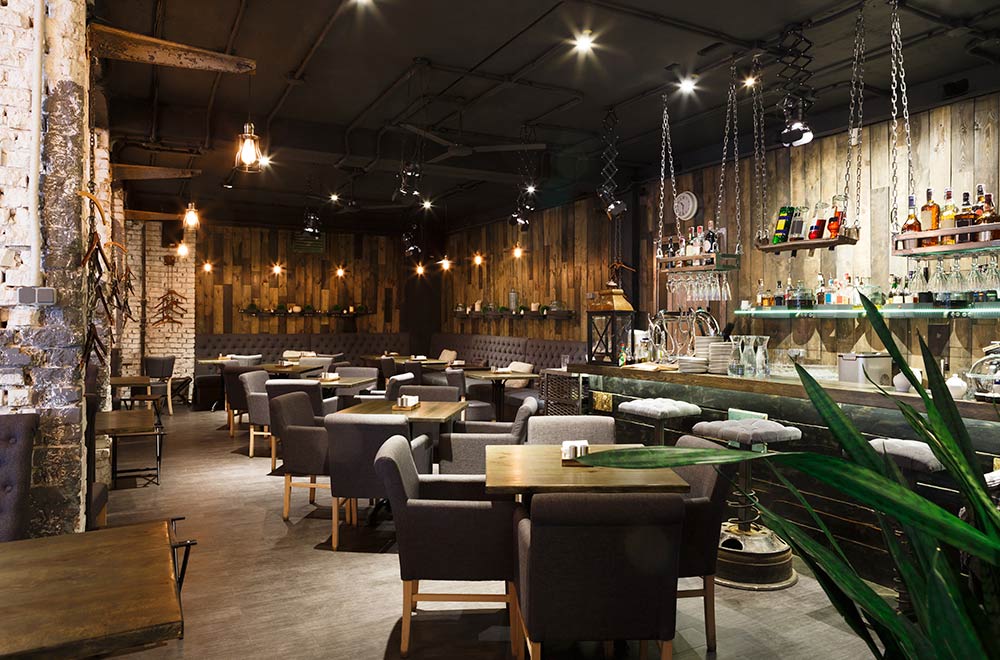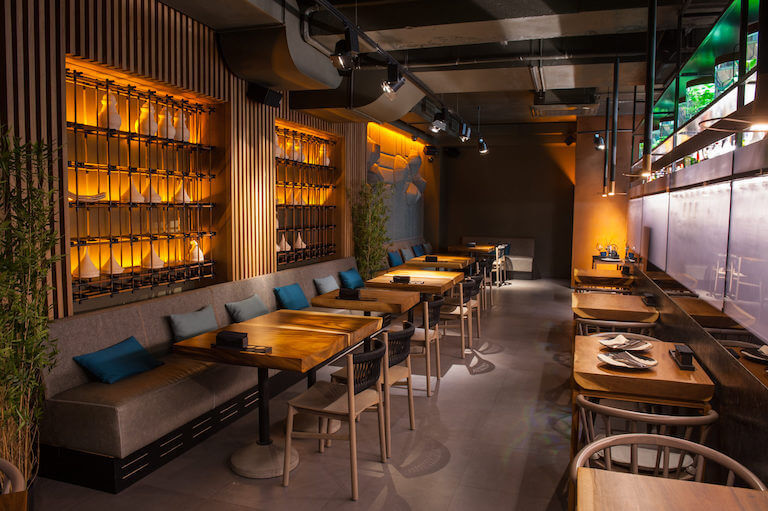Best Asian Restaurant Islamabad: Experience Flavors from Throughout Asia
Best Asian Restaurant Islamabad: Experience Flavors from Throughout Asia
Blog Article
Savor Genuine Eastern Cuisine With a Pan-Asian Spin for a Cooking Journey
Starting a culinary trip via genuine Oriental cuisine, boosted with a Pan-Asian spin, supplies a distinct possibility to check out the abundant tapestry of tastes that specify the area's diverse cooking customs. This experience invites you to enjoy the splendid equilibrium of preferences-- wonderful, salty, spicy, and sour-- integrated by fragrant natural herbs and flavors. Picture the cutting-edge fusion of Thai curry and ramen or the unexpected delight of sushi burritos. As you contemplate these tempting dishes, take into consideration the cultural narratives and historical impacts that shape them, each bite supplying a story waiting to be found.

Discovering Pan-Asian Tastes
In the realm of global gastronomy, Pan-Asian food stands out for its remarkable diversity and the harmonious interplay of flavors from various Asian societies. This cooking method celebrates the rich traditions and unique ingredients located throughout the continent, creating a tapestry of preferences that is both enjoyable and fascinating. Secret to Pan-Asian cuisine is its capability to stabilize different flavors-- wonderful, salty, spicy, and sour-- while highlighting the freshness and top quality of each component.
From the umami-rich soy sauce of Japan to the intense chili peppers of Thailand, Pan-Asian food offers a substantial palette of flavors. These elements are often incorporated in creative methods, boosting recipes with layers of complexity. As an example, the usage of great smelling herbs such as lemongrass and cilantro, typical in Vietnamese and Thai food, includes a revitalizing brightness to meals, while the unification of coconut milk delivers a velvety, rich appearance.
The emphasis on fresh produce and aromatic spices makes sure that each dish is not just a banquet for the taste yet also for the senses. Pan-Asian cuisine invites diners to start a cooking trip, discovering the vast and varied landscapes of Oriental gastronomy with every bite.
Blend Recipes to Attempt
While Pan-Asian cuisine is celebrated for its traditional tastes, the contemporary culinary landscape is increasingly welcoming combination dishes that blend these timeless aspects with influences from various other regions. This cutting-edge strategy not just honors the rich heritage of Eastern cookeries yet likewise introduces novel taste experiences that attract contemporary palates.
An archetype of such a fusion recipe is the Korean-Mexican taco, where marinated bulgogi beef is covered in a warm tortilla, topped with kimchi and a zesty gochujang-infused salsa. This combination weds the bold, full-flavored flavors of Korea with the vivid, fresh aspects of Mexican food. Similarly, sushi burritos have actually gained popularity, joining together the delicate artistry of Japanese sushi with the hearty, hand-held ease of a burrito, commonly featuring blend components like tempura shrimp and avocado with a drizzle of wasabi mayo.
An additional significant dish is Thai curry ramen, which infuses the luscious, fragrant spices of Thai curry into the soothing brew of traditional Japanese ramen, creating a harmonious blend that entices the detects. These blend dishes prolong past plain uniqueness; they represent a culinary dialogue between societies, motivating expedition and advancement in the world of Pan-Asian food.
Vital Ingredients and Seasonings
To really value Pan-Asian food, one have to recognize the important active ingredients and spices that develop its structure. This diverse cooking design draws from an abundant tapestry of Asian practices, utilizing an unified mix of flavors and structures.
Fragrant aspects are pivotal, with garlic, lemongrass, and ginger being ubiquitous throughout various Pan-Asian recipes. These ingredients give a fragrant base that improves the description intricacy of flavors. Flavors such as celebrity anise, cardamom, and cinnamon introduce heat and character, resembling impacts from regions like China and India.

Food Preparation Strategies and Tips
Mastering the art of Pan-Asian food calls for familiarity with its unique food preparation techniques, each contributing to the vivid tapestry of flavors this culinary custom is commemorated for. Central to these approaches is the stir-fry, a rapid cooking method that maintains the dietary integrity and brilliant shades of ingredients. Utilizing a wok, the stir-fry approach allows for also warmth distribution, necessary for achieving the particular texture and taste balance of Pan-Asian recipes.
An additional fundamental method is steaming, specifically prevalent in Chinese food. This gentle approach preserves the natural flavors and nutrients of ingredients, making it perfect for fish and shellfish and veggies. Dumplings, a beloved staple, often benefit from steaming, resulting in soft, succulent textures.
Cooking, additionally indispensable, presents great smoky midsts to meals such as Korean bulgogi or Japanese yakitori (Fine dining experience Islamabad). This strategy usually entails marinading components, allowing tastes to permeate deeply before cooking over an open fire or warm plate
Lastly, mastering the art of stabilizing flavors-- sweet, sour, salted, bitter, and umami-- is critical. Appropriately layering these aspects can raise a meal from common to extraordinary, supplying a complicated and satisfying culinary experience that embodies the essence of Pan-Asian cuisine.
Eating Experiences Worldwide
Around the world, Pan-Asian food provides an exceptional dining experience, commemorated for its rich tapestry of flavors and vibrant discussions. This culinary phenomenon has actually transcended social boundaries, catching the hearts and tastes of food fanatics worldwide. In multicultural cities fresh York, London, and Sydney, Pan-Asian restaurants serve as fusions where cooking practices from Thailand, Japan, China, and past converge, giving restaurants with an eclectic mix of dishes that highlight the region's diversity.
The worldwide allure of Pan-Asian cuisine lies in its capability to offer both authenticity and innovation. Cooks masterfully marry typical ingredients such as lemongrass, soy sauce, and miso with contemporary strategies, resulting in look at this web-site meals that are both acquainted and refreshingly new. This fusion permits restaurants to embark on a cooking trip that appreciates heritage while embracing modernity.
Furthermore, dining experiences are elevated through attentively designed settings that reflect the values of Pan-Asian visual appeals. From minimalist Japanese-inspired insides to vibrant Thai-themed spaces, each restaurant supplies an one-of-a-kind ambiance that enhances the cooking offerings. Consequently, patrons are not just taking in a meal yet partaking in a cultural experience, making Pan-Asian eating an absolutely international sensation.
Conclusion
The exploration of Pan-Asian food uses an extensive understanding of the detailed interplay of tastes and cooking practices across Asia. By embracing fusion recipes such as Thai curry ramen and sushi burritos, the culinary trip not only highlights the versatility of conventional active ingredients yet also showcases cutting-edge modern methods. This gastronomic adventure, improved by cooking techniques and essential flavors, provides an unique chance to value the multiculturalism and culinary creativity that specify Pan-Asian cuisine on a worldwide range.
Embarking on a cooking trip with genuine Asian food, boosted with a Pan-Asian twist, provides a special chance to discover the abundant tapestry of flavors that define the area's varied cooking practices.In the realm of international gastronomy, Pan-Asian food stands out for its remarkable diversity and the harmonious interplay of tastes from different Eastern cultures. Trick to Pan-Asian cuisine is its capability to stabilize contrasting tastes-- pleasant, salted, spicy, and sour-- while highlighting the freshness and high quality of each ingredient.

Report this page